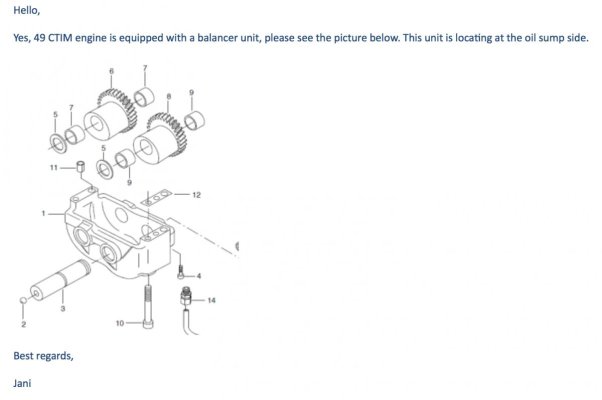Eric, my point is quite simple. With but rare exception we all own a boat that has a given engine. No matter what the perfect theory is, few of us are going to yank out a perfectly good engine and install a smaller one to save a few dollars in fuel per year.
OC Diver is that rare exception. Kevin Saunders another, but less for saving fuel bucks and more for gaining entry to the 21st century. I'm sure there are a few others. Would those guys please raise their hands?.
...snip.....
I'll raise my hand. Mk 1's usually came with a pair of Lehman 120's or the Cummins 555 (270 or 320 HP). Some had Cat 3208's, but not many. I repowered with JD 6068 in 201HP version. So right in the middle of the minimum and optional power choices from the builder.
It wasn't so much about saving fuel. The 555's were not as efficient as JD's for sure, and the difference was large enough that LA-Hawaii was not feasible with the 555's but would be possible with the JD's. And I was contemplating that because at the time the cost of freighting the boat to Australia was over $100,000.
The engine change arose as I had to replace leaking fuel tanks, and to do that I had to pull the 555's. I looked at going over them while they were out - new hoses and various other PM but stopping short of stripping them down. Afterall, they started first turn, made WOT and didn't smoke. And had only done 1900 hours. So why not put them back in? Well, two reasons. One was that the 'external' PM for both engines would equal the bare cost of one new JD factoring in parts and labour. Two, parts for the 555 are expensive, can be hard to get or need to be aftermarket. That might be OK in USA but I did not want to be waiting long times and paying 'Volvo' part prices when in Australia. If I put them back in without doing any PM I might get a few seasons without needing to do much, or I might not.
The choice of HP for my new JD's was based on experience running the boat. I knew that to cruise around 8-9 kn only needed +/- 150 HP. The Mk 1's fitted with Lehmans were in a sweet spot really, provided you were happy at displacement speeds in a SD hull. I also knew that the 270 HP versions of the 555 would get me to 16kn. But at 34 gph, with trim tabs down and ploughing a hole in the water that created a fearsome wake. Not really semi-planing, a bit short of that it seemed to me. In other words, running at a better SD speed needed more HP. Probably a total of around 800, maybe more. I thought about that, but only briefly. I would rarely be able to justify the fuel burn of semi-planing speeds compared to getting out of bed a bit earlier!
It was near the end of 2012 when I was ordering. Form Jan 2013 JD were only allowed to supply Tier 3 engines. Cleaner than Tier 2 certainly, but not as fuel efficient. For Tier 2, the dealer could readily get 300 HP versions of the 6068, and was willing to supply them at the same price as the 201 HP I wanted.
But I stuck to my guns and they managed to obtain a pair of the last Tier 2 201's to be sold. I did not want aftercoolers (on the 300 HP but not the 201 HP) and I had calculated that the 201's at 2600 rpm WOT were on the same prop curve as the 555's, 270 HP at 3000rpm. That turned out to be the case. We did not even have to adjust the prop pitch! Whereas, putting in the 300 HP versions (at 2600 rpm WOT) may well have necessitated new props.
I run the 201's at 35-50% load for 8-10kn speeds. Wind and waves do have quite an impact on loading level.
I could go on, but hell this post is already too long. Tom, be careful about asking folks to put their hands up.....

